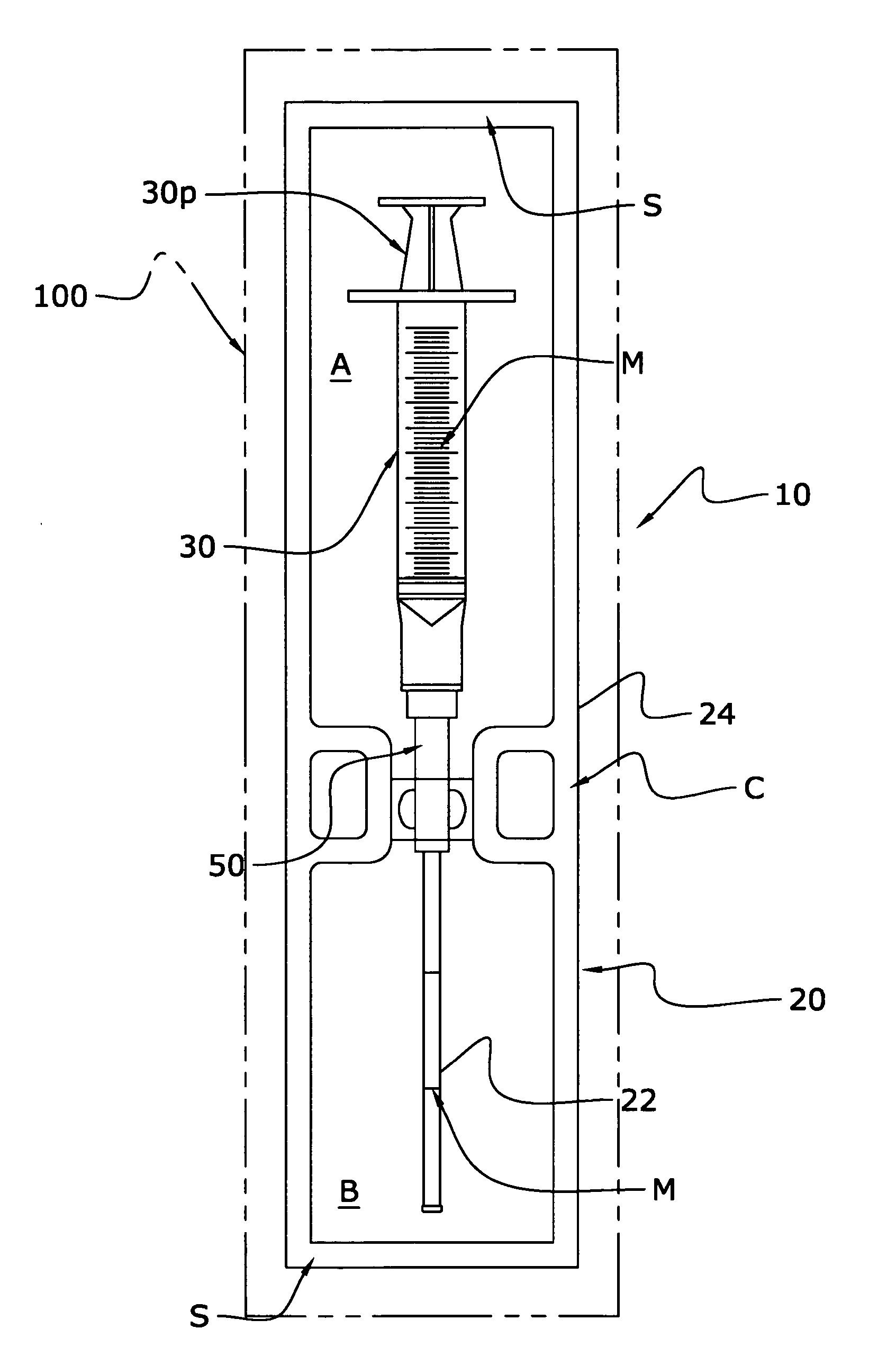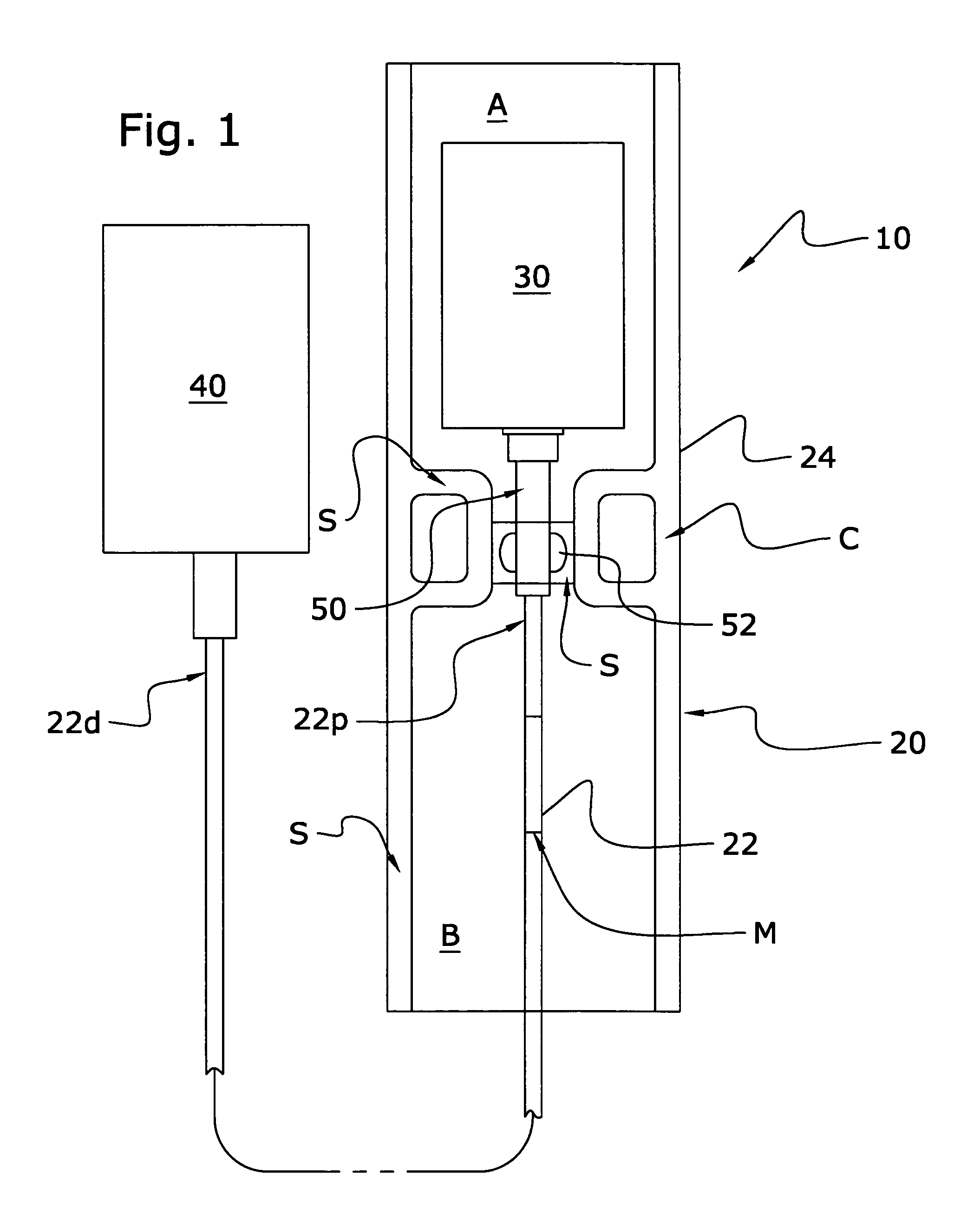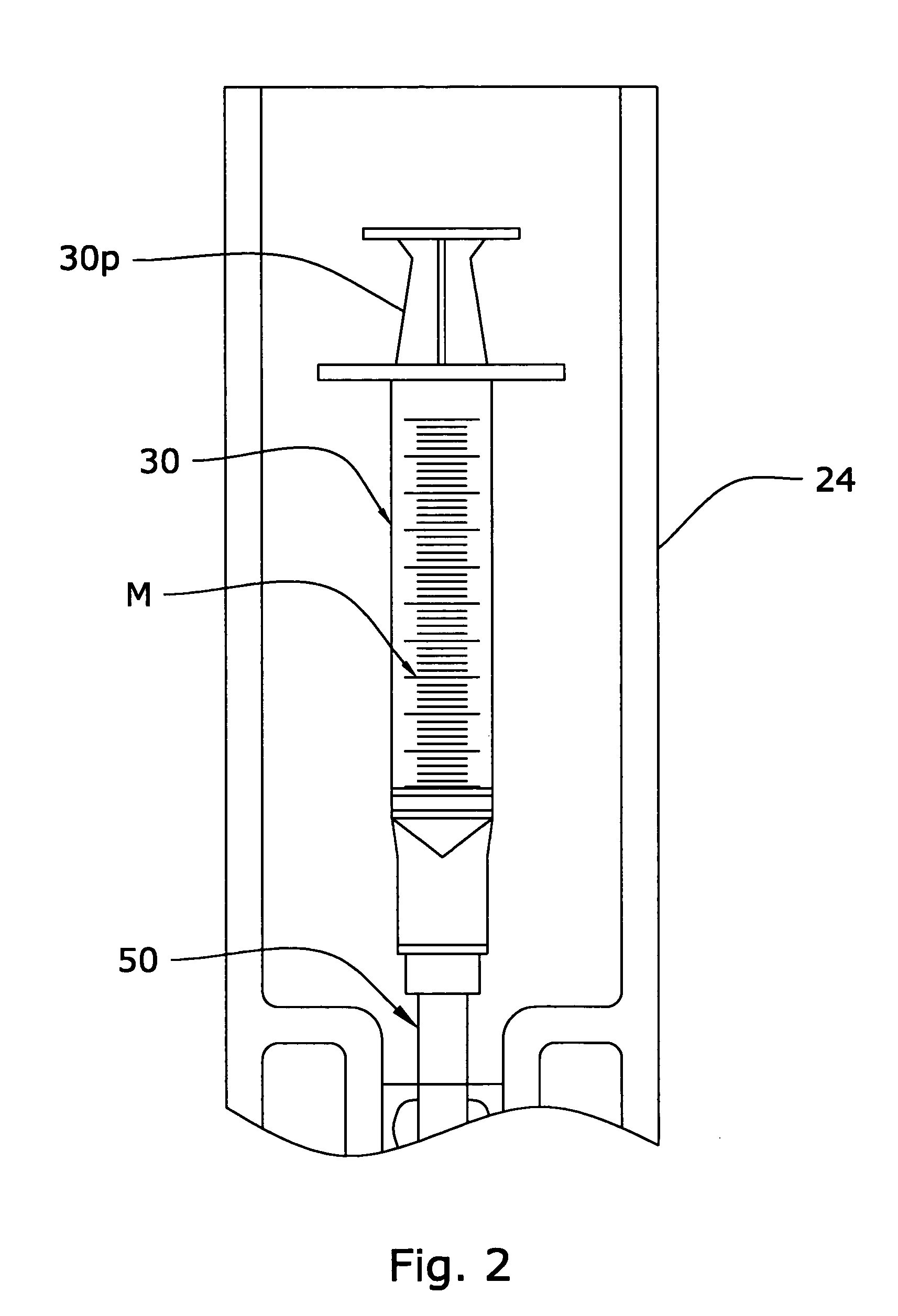Specimen storing device and method
a technology of storing device and specimen, which is applied in the direction of specific use bioreactor/fermenter, dead animal preservation, after-treatment of biomass, etc., can solve the problems of undesirable contamination of specimens, no desirable processes, and easy contamination of openable containers
- Summary
- Abstract
- Description
- Claims
- Application Information
AI Technical Summary
Benefits of technology
Problems solved by technology
Method used
Image
Examples
Embodiment Construction
[0017] The present invention can be used to store and preserve specimens in a frozen state, without contaminating the same. More specifically, the present invention can be used to aspirate a volumetrically measured specimen, store the specimen, and recover the specimen in a closed environment. According to the present invention, the specimen is completely or at least substantially isolated from the reactive agents, such as vapors, gasses, and liquids. The present invention uses a closed system where the specimen is completely or substantially isolated from the preserving environment.
[0018] Referring to FIG. 1, the present system 10 includes a storing device 20 and an aspirating or vacuuming device 30. The storing device 20 can include a storage unit 22 and a barrier 24. In the illustration, the storage unit is a tube or tubular in shape, initially having both of its ends open.
[0019] The dimension of the tube is selected so that a desired amount of specimen (in fluid) is completely...
PUM
 Login to View More
Login to View More Abstract
Description
Claims
Application Information
 Login to View More
Login to View More - R&D
- Intellectual Property
- Life Sciences
- Materials
- Tech Scout
- Unparalleled Data Quality
- Higher Quality Content
- 60% Fewer Hallucinations
Browse by: Latest US Patents, China's latest patents, Technical Efficacy Thesaurus, Application Domain, Technology Topic, Popular Technical Reports.
© 2025 PatSnap. All rights reserved.Legal|Privacy policy|Modern Slavery Act Transparency Statement|Sitemap|About US| Contact US: help@patsnap.com



